What’s Really Happening with AI in the Enterprise
A key pillar of our investment strategy at Sierra Ventures is the guidance we receive from our CXO Board on their areas of interest, the readiness to adopt various technologies, and the associated budgets.
Given the mind-numbing speed of AI proliferation, we surveyed the group to get their perspective. We received 30+ responses from senior executives responsible for over $100B in annual IT spend, spanning a broad range of sectors, sizes of enterprises, and speed to adopt new technologies.
#1 Enterprises are Still Early in Their Journey but Hungry for More
The survey found that enterprises are still in the early stages of adopting AI but eager to expand its use. Many of the respondents indicated they are either experimenting with AI or have already deployed it in a limited capacity. While the data was anonymized, our deeper analysis provided two key learnings:
- Technology companies surveyed have the highest budget (by %) allocated to AI initiatives, but believe they are early in the adoption curve and were nervous about being outspent by their peers.
- Chief Data and AI Officers reported widespread adoption (their responsibility), but that view was not reflected by CIOs and CTOs, who feel that organizational issues are restraining them and have to be targeted with their projects.
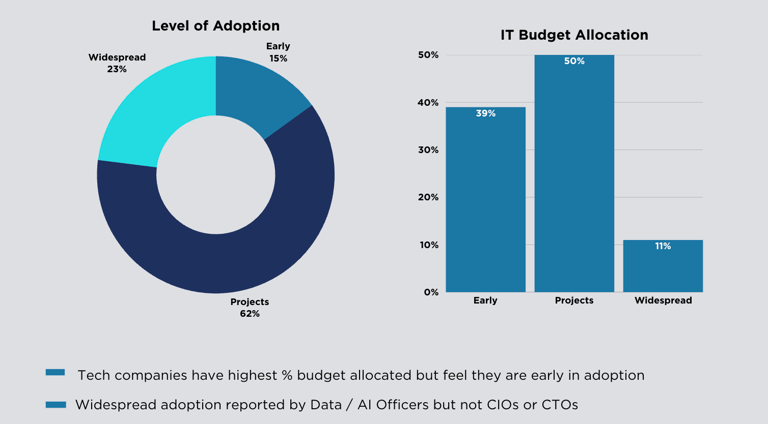
#2 Companies are Walking the Tightrope of Speed and Compliance
Many organizations reported finding a balance between speed and compliance. Over a third of the companies surveyed operate in regulated industries such as healthcare and financial services. While they are cautious about deploying AI in core business functions where regulations have been slow to evolve, these enterprises have been aggressively seeking out solutions to automate their legacy workflows and processes. Their desire to rapidly adopt AI tools must be balanced with concerns over data security, organizational resistance, and, surprisingly, ethical issues in only a few cases.
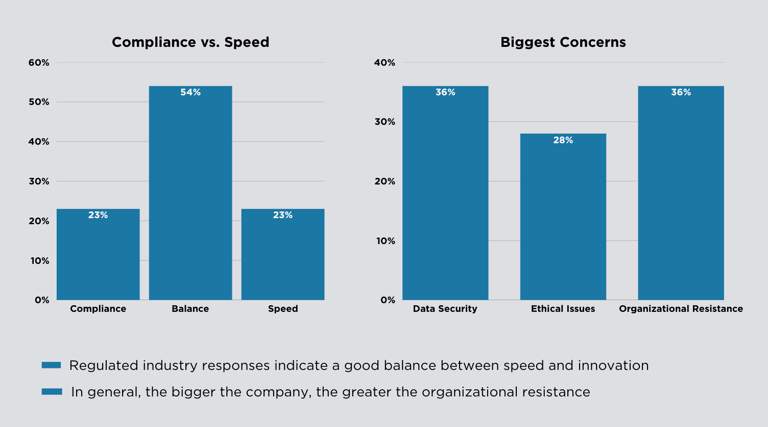
#3 Low-Hanging Fruit Across the Organization; Influenced Internally
AI projects are proliferating across all departments of the enterprise. We could not find patterns in the data between Sales & Marketing, Product & Engineering, and Business Operations. The examples listed ranged from legal tech to coding tools to content generation, with most use cases being influenced by internal teams and not by the cloud providers or consultants. A key takeaway for us is that significant dollars will be moving away from consulting (IT outsourcers, strategy firms, etc) and professional services (law firms, PR agencies, etc.) to technology-powered solutions. Our thesis on service-as-software with companies like Eudia in legal tech, and Pantomath in data operations.
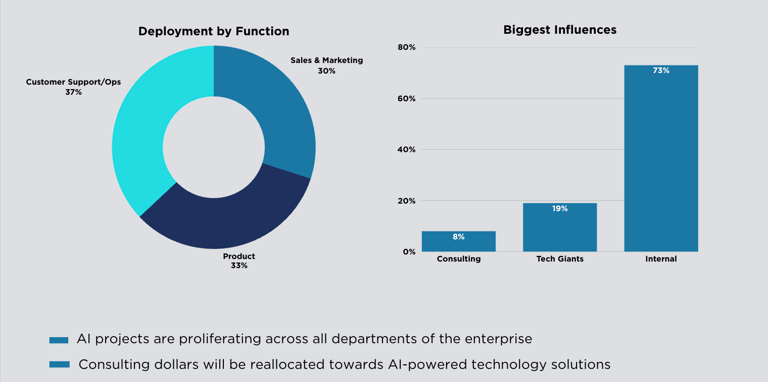
How Scale and Industry are Defining AI Adoption
AI adoption is not one-size-fits-all. Patterns emerge quickly when you look at company size and industry. While AI is touching nearly every corner of the enterprise, how it’s deployed—and how aggressively—varies dramatically depending on company scale and vertical focus.
Larger Enterprises (>$100B Revenue or Market Cap):
-
Further along in widespread deployment, with 83% reporting AI across all three core functions (Product/R&D, Customer Support & Ops, Sales & Marketing), far above the average of 50%.
-
Have “found a good balance” between speed and governance—often by necessity, due to internal pressure from compliance, risk, and legal teams.
-
Ironically, they are allocating less than 5% of their 2025 IT budget to new AI initiatives. That signals a more surgical, risk-aware approach.
-
Report organizational resistance as the number one blocker—100% of these respondents cited it as their top concern
By Industry:
-
Retail & CPG companies are among the fastest movers. These companies are investing more aggressively in AI, with internal teams leading the charge. 85% report finding the right balance between speed and governance—well above the overall average of 54%. Their focus is often on revenue generation, customer experience, and margin improvement, with deployments showing up heavily in customer support and operations.
-
Technology companies, unsurprisingly, are leaning into AI with urgency. They reported both the highest allocation of budget to AI initiatives and a posture that is “skewed towards speed and innovation with an eye on governance.” This group is also the most concerned with data security and privacy (80%), underscoring that speed doesn’t mean recklessness. Notably, nearly all tech respondents are building their AI strategy internally rather than relying on cloud providers or consultants.
-
Healthcare is progressing with more caution, but not standing still. 83% say they’ve found a healthy balance between innovation and regulatory compliance—no small feat in one of the most tightly governed industries. AI adoption here is driven by a mix of internal efficiency plays and patient-facing improvements, and most teams are managing this evolution with internal expertise rather than external firms.
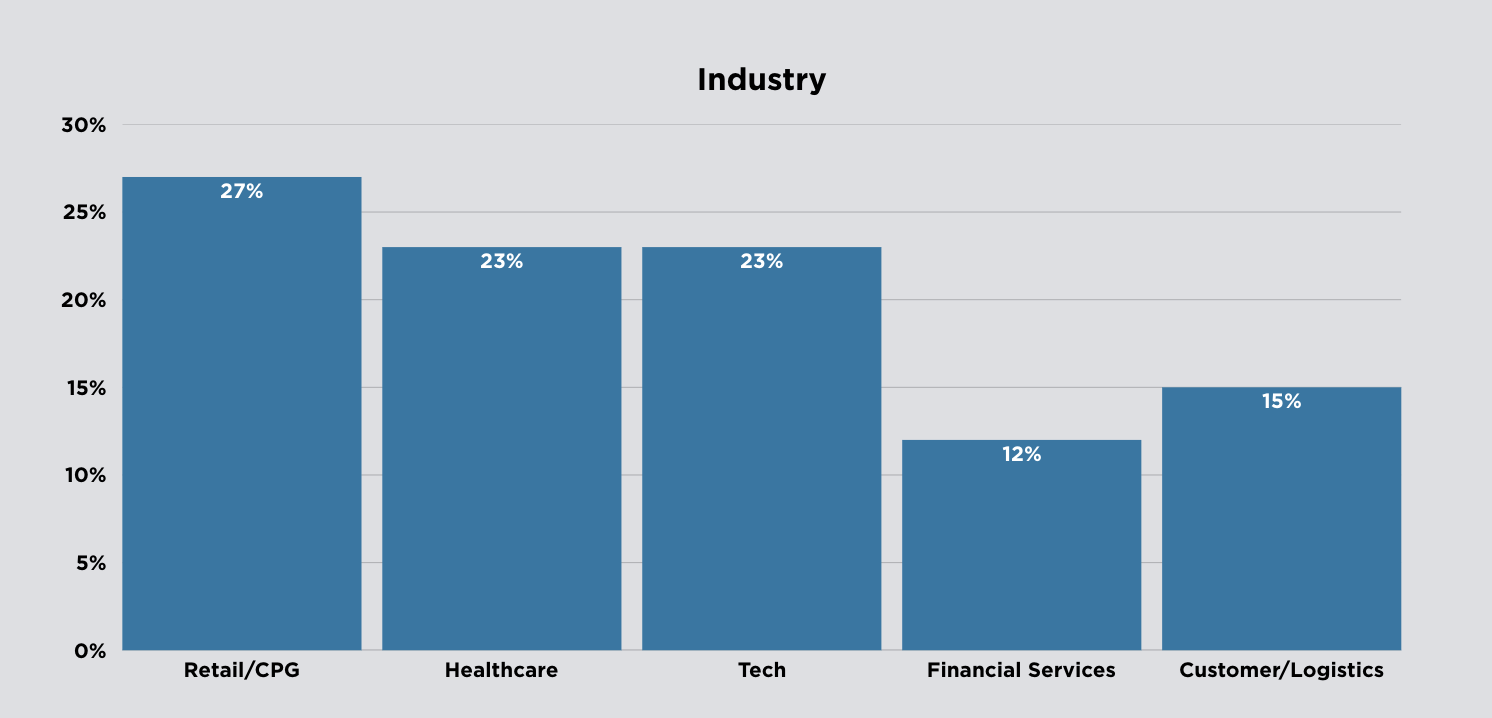
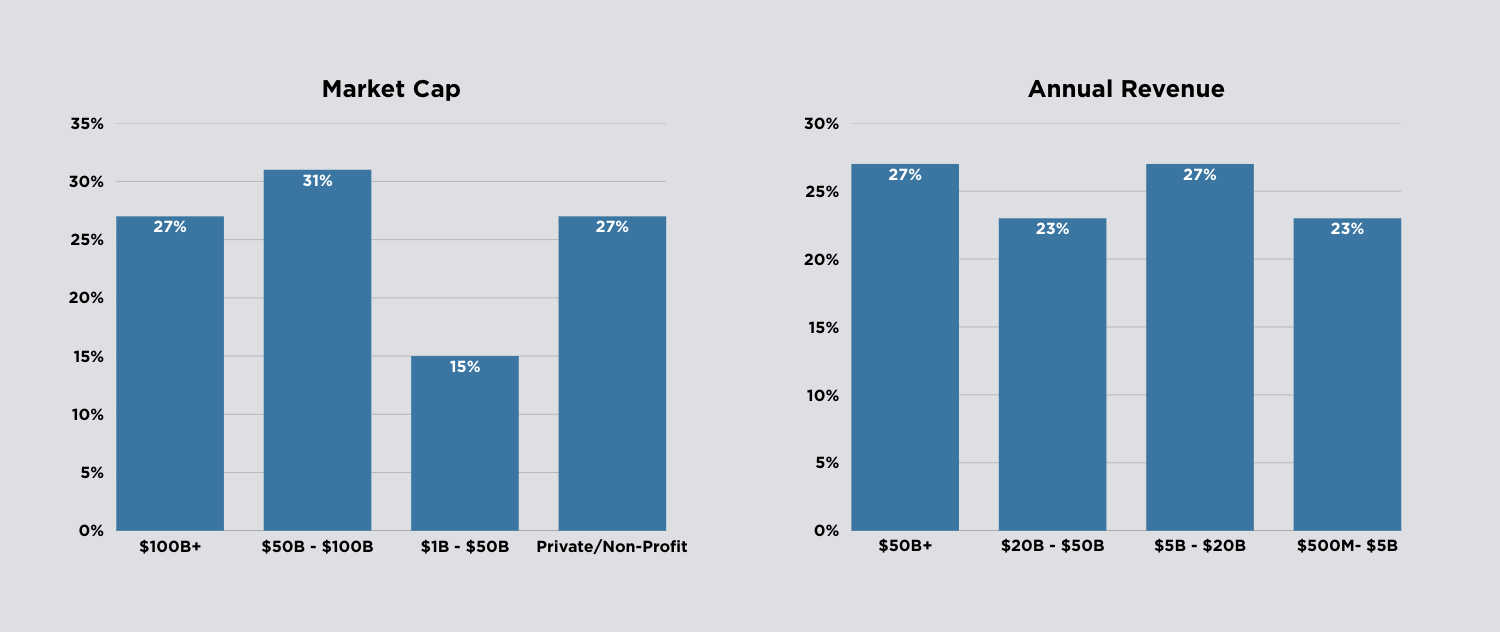
So, What Does This Mean for Startups?
We have not seen as great an appetite from the big enterprises to work with startups. But this comes with some caveats:
- Founders must be acutely aware of the need to maintain enterprise guardrails. We are seeing many “one-and-done” projects at companies that address a temporary need, but don’t meet some of the requirements listed earlier.
- There is a huge debate about the right pricing models in the AI world, and startups need to be very dynamic in their thinking about this shift.
- Traditional GTM methods and channels are being disrupted, and startups have an opportunity to find creative ways to efficiently get to their customers.
